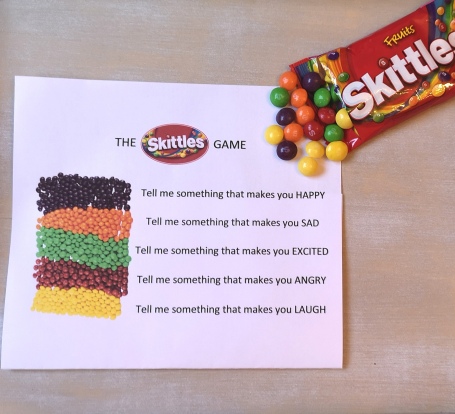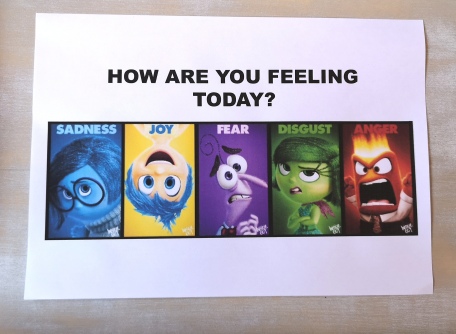This post was inspired by a fellow mummy after she posted on social media about her daughter feeling a little low; but couldn’t get her daughter to fully open up about why. As a teacher, I’ve always been hugely passionate about supporting children’s mental health. Children are facing ever increasing pressures and demands; from school, social media, the media’s perception of the ‘norm’, peer groups as well as the normal ups and downs in their lives.
Children often find it difficult to open up to their parents, sometimes feeling embarrassed, ashamed, or scared of what we may think. They often feel we don’t understand; we have our lives together, and have it all figured out. Things were different when we were younger so how could we possibly know what it is like? However, we know that isn’t the case! I’m not sure I know anyone who feels that they ‘have it together’ or ‘have it all figured out’ – if you do, please drop me a message with some hints and tips!
In many cases, children want to talk, but they just aren’t sure how. These are some of the activities I like to use with my students to help them open up, and will use with my children as they grow;
1. Worry Jar
This is great for all ages; from Primary aged children, through to adults. The idea is that you place your worry in the jar when you leave or get home from school/work. You are not allowed to dwell over it whilst it is in the jar, leaving your mind in peace. It remains in the jar until the following morning; usually, after sleeping on it, the worry has subsided, if it hasn’t – today is the day to tackle it.
2. Rainbow of Positivity
This is better with younger children. I usually get them to colour in as they go through it (as most children love colouring). Each colour band has a sentence for them to complete; I love… My favourite thing to do is… I’m a good friend because… I like to dream about… This helps them to focus on positive thoughts about themselves, it also helps you gain good insight into potential strategies that you can use to support them in the future. (I’ve also created a geometric butterfly with the same sentence starters).
e.g. If they love football. You can create a chart with team logos on; each logo has a conversation starter; you pick your team, and you answer that conversation starter. Make sure you get clued up on your football banter if you want to get them best out of the conversation!
3. Journals
Sometimes children find it easier to write down their feelings, than disclose it to an adult verbally. Providing them with a journal can be really helpful. This can be as structured or unstructured as you’d like. If you do decide you want to read it; I would recommend asking for permission before doing so. If you do happen to read it without permission, be careful how you approach discussing any concerns to prevent them feeling betrayed or feeling that their trust has been broken.
4. Skittles Game
This is one of my favourite activities to do – partly because I get to eat some Skittles! For each colour, you assign an emotion;
- Purple – Something that makes you happy
- Orange – Something that makes you sad
- Green – Something that makes you excited
- Red – Something that makes you angry
- Yellow – Something that makes you laugh
You take it in turns to take a sweet out of the packet; and answer accordingly. They like hearing about our insecurities and dislikes too, it makes us ‘more human’.

5. Emotions cards
This is nice to do as a whole family if your children are younger. For this, we have used the characters from the film Inside Out (if you’ve not watched this film, it is a must see!) I have used this in a number of ways within my classroom; from a poster on the door as they enter, to table cards for each student. If you do this at home as a poster; the idea is that you tap the appropriate emotion that best represents your feeling when you get home. It gives you a gauge of how they’re feeling and what they need from you right then. It also becomes good dinner conversation; everyone openly discusses their day and why they tapped the emotion they did.
This takes a little bit of training, but once you’ve done it as a family for a few weeks consistently, it becomes normal, with the conversation flowing easily.

The overall aim of these activities is to encourage children to open up. The more they practice this, the more normal it becomes; with them becoming more confident and comfortable discussing their emotions. It is important that you set quality time aside with no distraction; if they think you are too busy or have other things on your mind, they won’t want to ‘bother you’.
The world can be an overwhelming place for a young mind, and what seems like a small insignificant event can feel like the whole world to them. These activities should help them open up, but if you feel their mood is worsening; they’re very low in mood, withdrawn, angry, eating has changed, anxious, or a shift in personality, it is wise to seek professional help.
Elisabeth
Don’t forget to follow my social media accounts;





These are such great tips! Thank you for sharing. We aren’t quite at this stage with our little one, but I’ll definitely be saving this for later!
LikeLike
Thank you 🙂 I hope you and your little one are well.
LikeLike
Love this, definitely going to do the rainbow and encourage a journal. Off to try and get inside out on eBay too! It has been on my wish list for a while! X
LikeLike
Let me know how you get on, I hope it helps 🙂 Inside Out is a must see, and definitely helps when your little ones throw tantrums, you can’t help but imagine the different characters in their heads at the time!! X
LikeLiked by 1 person
So many great ideas, defo going to use these with my children. Thank you xx
LikeLiked by 1 person
Thank you 🙂 I’m really pleased they’re helpful 🙂 hope you’re all having a lovely weekend x
LikeLike